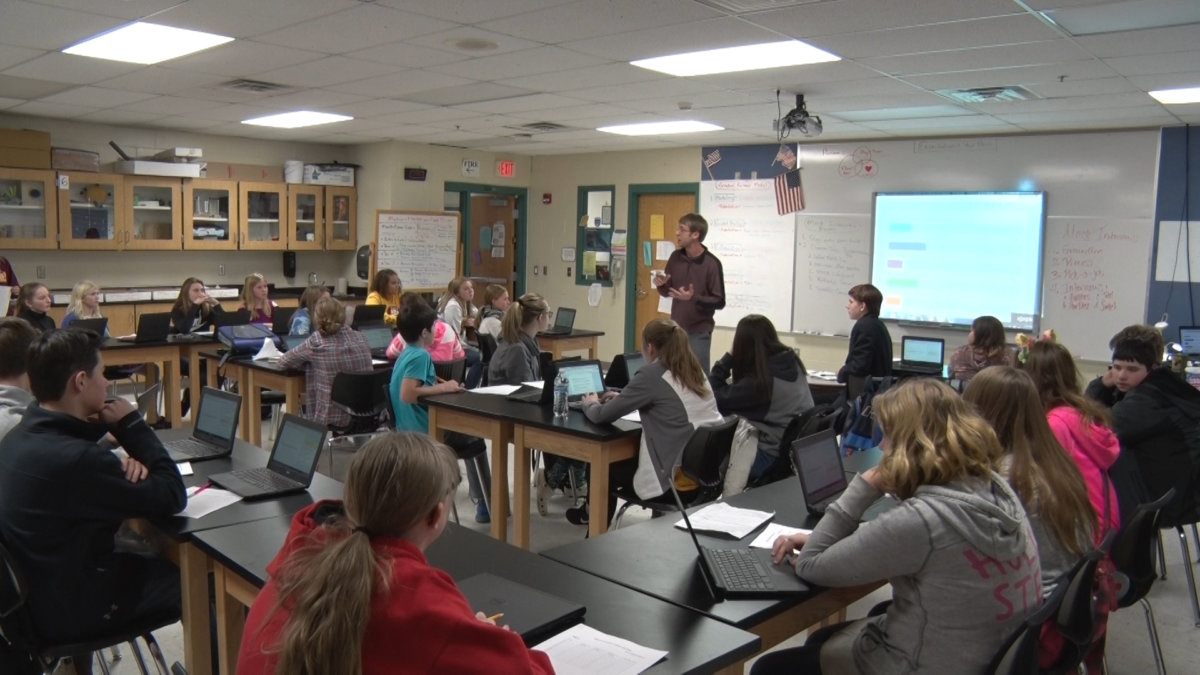Middle School Experiential Learning Program Exposes Students to Different Career Field Every Month
Energy levels were high as middle school students recently explored various technical fields at Minnesota State Community and Technical College (MSCTC). This particular campus visit showcased careers in energy and electrical-related industries, according to the college’s website.
Students cycled through hands-on activities in M State’s Electrical Line Worker, Electrical Technology, HVAC and Gas Utility Service Construction programs and in the areas of safety and electrical contractor/business owner.
The students are participants in an experiential learning program called Metier that allows them to experiment with different career paths and find out where their interests are. Started by Pillager Public Schools, the Metier program has been recognized as the top 2017 innovative school project by the Humphrey School of Public Affairs at the University of Minnesota:
Metier (pronounced meteor) is an experiential learning program that teaches students in grades 5 through 8 to build a life and career around “flow,” defined as the happiest state wherein you feel and perform your best. It achieves significant impact by bringing in community, colleges, organizations, and individuals to share education and career paths so students can sample 15 career fields over two years.

Early exposure to these potential future careers gives students a better idea of what career field to pursue. Too often, students will guess at what career they want and end up with a degree they can’t use and a debt they can’t pay off. According to Jordan Herman, a science teacher at Pillager Middle School, the Metier program helps students before they get to this point as a “try it before you buy it model, where kids are experimenting and trying on different careers before they actually have to purchase one.”
The discovery begins in fifth and sixth grade. Games are incorporated into daily lesson plans to help students figure out what they like and don’t like. Students learn more about themselves and learn how to apply these interests to different job settings. Mr. Herman adds:
That’s one of the great things about Metier, it draws that distinction and helps kids figure out, “I’m really good at this.” And other kids, “I’m not.” And both of those are successes, because they’re both learning about who they are.
In seventh and eighth grade, students “try every different career field we can throw at them for a month,” according to Kevin Votaw, an English teacher at Pillager Middle School. Metier participants are exposed to a different career every month, seven to eight per school year, over a two-year period. The “career clusters” include:
Environment
Transportation
Robotics
Business
Electricity
Energy
Agriculture
HVAC
Nano technology
Graphic design
Computer coding
Engineering
Medical technology
Human services
Education
Exposure to each career cluster is a three-step process: Speakers from the career background come into the classroom to explain what they do; students are assigned projects that work with certain aspects of the career to gauge further interest; students then go on a field trip to see the career in action.
Back in October, the career focus was transportation. Students interviewed a trucking company owner, designed airplane propellers and 3D print cars, and visited MNDOT and the airport.
The goal is to replicate Metier and have it available at the high school level, as well. Many young people are leaving high school without any post-secondary aspirations. This reality is why industry-education partnerships like the Metier program are so important and need to be highlighted.
On Tuesday, April 24, the Center will host a forum to describe other successful examples of innovative initiatives on workforce development. The forum will feature Kyle Hartung of Boston-based Jobs for the Future in a presentation entitled “The Future Can’t Wait: The Imperative of Industry/Education Partnerships to Meet the Needs of the Future Workforce.” Registration and event details can be found here.